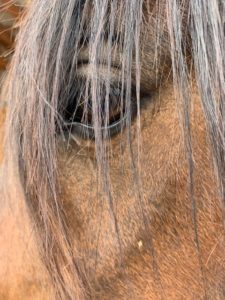One of the pain areas that is very common in horses is the spine. And one of the most common things that people want to do is begin an exercise regimen for the equine with back pain.
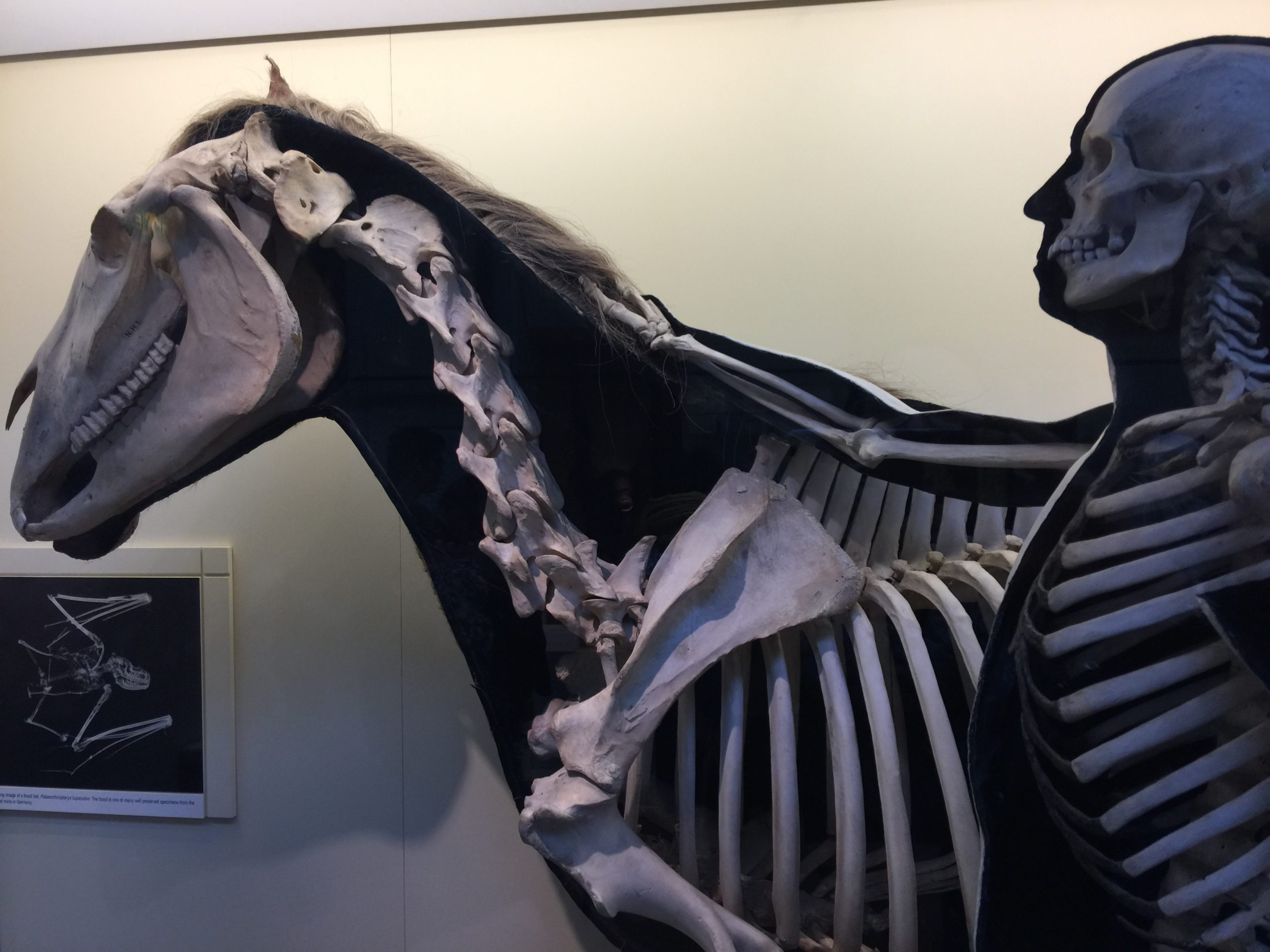 Generally, back pain affects the entire body. If you have ever experienced back pain, it can have a debilitating affect on your activity, from walking to sitting, standing and even lying down. If someone wants to make you do exercises if you’re in excruciating pain, that can be the worst thing for you.
Generally, back pain affects the entire body. If you have ever experienced back pain, it can have a debilitating affect on your activity, from walking to sitting, standing and even lying down. If someone wants to make you do exercises if you’re in excruciating pain, that can be the worst thing for you.
And, people are not the only ones who can have scoliosis, or, a condition where the spine is curved sideways. The horse can also have a kissing spine, sciatica, hunter’s bump, and many other conditions.

Unfortunately, horses are not often in the position to say no to what we prescribe for them. They will resist in other ways – refusal to move, bucking, rearing, biting, which also may hurt them. But their intention is to get you to stop what you’re doing, or making them do.
At this point in the process, if I come to work with a horse with back pain, I want all exercises stopped until we can evaluate what is going on. I will do a full evaluation of the spine and legs, shoulders and ribcage, to see what parts of the body are being influenced. One area of the spine can be demonstrating, either visually or through palpation, a pain area, while another area of the spine is less mobile and can be the primary culprit. We just don’t know until we check it out.
Next, once the horse is moving more fluidly, which may take one to five or so sessions, always depending upon the degree of severity which doesn’t always reveal itself immediately, we can add some very simple exercises that are called in Ortho-Bionomy, “post-techniques,” to strengthen the spine and extremities while the horse is receiving bodywork.
Working with back pain is not a one-shot fix. It took awhile for the condition to develop, unless it’s an acute injury. Usually if the spine is pushed into what we may perceive as its “right” position by an assertive modality, it will relax back into the posture that it knows well. When my mother used to push my shoulders back because she didn’t like my hunched posture, it didn’t make it easier for me to keep my shoulders back. And what she didn’t know was, shoulders jammed back wasn’t really a healthy posture. Posture needed to come from within, not be forced from without. I needed to learn how to breathe more fully, and open up my sternum and ribcage, and get to know my body.

If we work with what is, where the spine is at the moment of contact, and support that, it will feel “met” and be able to make more lasting changes. Regular maintenance is vital in order to maintain the spine and remind it of what felt good, remind it that it has its own intelligence and eventually, once the big pain is not so present, it can even self-correct. After that self-correction phase, the bodywork sessions can go deeper, address layers that are possibly causing the more obvious problems to keep reoccurring.

The types of treatments that are imposed from the outside such as injections and surgeries are expensive and may work to alleviate the problem immediately, but they do nothing to support the spine and extremities from within. The owner is often happy because they have done what was prescribed and have high hopes for a positive outcome. And sometimes the treatment is useful for interrupting a chronic pain cycle. Owners also may be able to ride their horse for awhile which makes them happy, because having a horse standing around not able to participate in the season’s activities makes riders crazy.
Owners may opt to do the injections as well as do the bodywork, which can be useful, because then the body is being met as well as getting the pain addressed immediately.
Then the business of the exercises – not all exercises that are commonly recommended are going to be a good fit for every horse.
- Lunging, for example, can exacerbate a fracture if you don’t know the horse has one. Trying to lunge a horse who is in too much pain to move on a circle is not a good idea.
- Riding on a twenty-meter circle is not a good idea if the horse has trouble disengaging his hinds and has a lot of pelvic or sacral pain.
- The round pen may not be good for the same reasons – any lameness on any leg or limb.
- Going over obstacles may be too much for some horses.
If I don’t have a diagnosis, I will walk straight lines with a horse where he’s comfortable doing so. I may add ground poles at ground level once I feel he/she can lift legs comfortably.
In humans, the problem with spinal surgeries is that you may repair one part of the spine, but it will weaken the entire spinal chain and chances are, you will have problems with another part of your spine later on. If you can avoid surgeries, do so and opt for bodywork, physical therapy or what works for you. If you have no other choice but surgery, then of course, go for it.
With horses, the same is true. The active life of the horse will decrease with age anyway, so owners may think if I do this surgery today then I can ride for x number of years before the repercussions come, or maybe they don’t even know there are repercussions in the rest of the spine. It’s definitely a personal decision.
I have worked with many working horses on their back pain and been very successful restoring them to varying levels of their work life with rest, consistent techniques and then the post-technique exercises. The fascia must be able to made more flexible so that it can support the structure. And fascia doesn’t just enclose muscles, it is the supporting envelope for all other systems except the digestive and respiratory systems.
It takes a commitment on the part of the owner, and I believe most owners are very committed to wanting the best for their horses. It’s hard to figure out what the “best” is sometimes, as there are so many options.
Owners can also learn a number of very powerful, gentle techniques to support their horses, which ultimately empowers them to not need as many therapeutic visits.
Horses also appreciate the relationship aspect of bodywork. They are used to being “done to,” as you may feel when you’ve had to have a number of invasive medical procedures done. They have shoes nailed on (in some cases), dewormers and medicines applied, injections and procedures done where needed. Having someone work on them just for them, listening to them, can make an enormous difference in the way they feel about their relationship with their humans.
As an owner and bodyworker, I don’t always know what’s best. But I do know that maintaining equines with bodywork gives them a big headstart, supports the system before and after injury, makes them less injury prone over all (notwithstanding poor riding, weight, saddle fit and overriding).
The less invasive and the more relational we can be with horse care, the better for our animals’ health, longevity and well being, and also for our pocketbooks.
A two-day weekend course related to this topic will be offered in Santa Fe, New Mexico May 20-21st, 2023 entitled Introduction to the Equine Spine.





 Red isn’t a replacement, she is her own horse. She is young and curious about everything, and especially her interactions with humans and her training. She loves her training. What I’m seeing in her is that everything is an adventure. While her first years were fraught with uncertainty, fear and mistreatment, when she didn’t want anyone to catch or touch her, she has now landed somewhere where everyone listens to her and she wants to listen.
Red isn’t a replacement, she is her own horse. She is young and curious about everything, and especially her interactions with humans and her training. She loves her training. What I’m seeing in her is that everything is an adventure. While her first years were fraught with uncertainty, fear and mistreatment, when she didn’t want anyone to catch or touch her, she has now landed somewhere where everyone listens to her and she wants to listen.
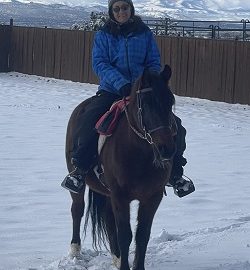


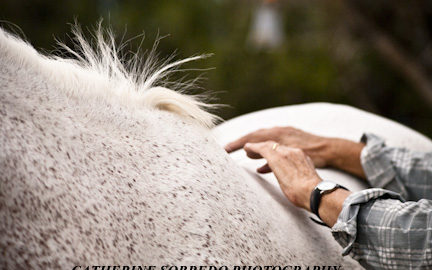
 A healing journey is specific, non-specific, historic, full of layers and wondrous avenues of enlightenment. The layers that developed first – en utero, at birth – will be deepest in the body, and the last ones to heal. Perhaps we can go farther back than that – generations that will heal last, if at all in this lifetime. The healing journey is one of seeking to unravel those layers in the body’s time, as it has a time of its own. Seeking self-correction.
A healing journey is specific, non-specific, historic, full of layers and wondrous avenues of enlightenment. The layers that developed first – en utero, at birth – will be deepest in the body, and the last ones to heal. Perhaps we can go farther back than that – generations that will heal last, if at all in this lifetime. The healing journey is one of seeking to unravel those layers in the body’s time, as it has a time of its own. Seeking self-correction.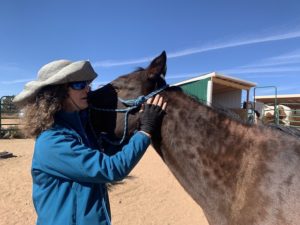 When I talk about injury, that injury could be internal or external, it could be musculoskeletal, visceral, neurological, circulatory, emotional, psychological, psychic…
When I talk about injury, that injury could be internal or external, it could be musculoskeletal, visceral, neurological, circulatory, emotional, psychological, psychic…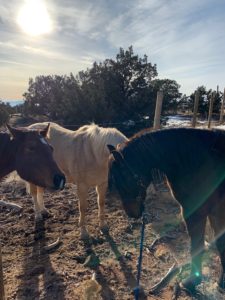
 Horses demonstrate to us repetitive stress in so many ways. They are subjected to repetitive activities – training, carrying people with unaddressed repetitive stress and compensatory patterns, saddles, bridles, other tack, trailering, abuse, repetitive behaviors.
Horses demonstrate to us repetitive stress in so many ways. They are subjected to repetitive activities – training, carrying people with unaddressed repetitive stress and compensatory patterns, saddles, bridles, other tack, trailering, abuse, repetitive behaviors.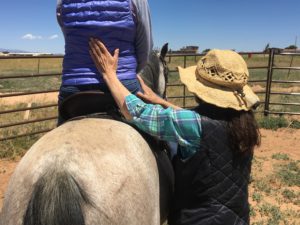 to take place slowly, addressing each layer as an individual, peeling them back as the body is able to address them.
to take place slowly, addressing each layer as an individual, peeling them back as the body is able to address them. it is those things, the compensation is coming from a lot of places and the body wants to be addressed as a whole. Not only will it show its compensation, it will show its strengths – where it can move and where it is light and receptive.
it is those things, the compensation is coming from a lot of places and the body wants to be addressed as a whole. Not only will it show its compensation, it will show its strengths – where it can move and where it is light and receptive.

 These are horses who have no relationship with their riders. They are ridden by many different riders in preparation for this event and considered “schoolmasters.” But to go through an event at this high level of stress, they need the relationship. When things get scary it’s not enough to simply know how to ride, you need to know the way that animal thinks, moves, it’s preferences, what frightens it, know it deep down so that you can set up the best possible outcome. If introducing a horse to new things, it’s best if he has a familiar, much loved person to help him or her through it all.
These are horses who have no relationship with their riders. They are ridden by many different riders in preparation for this event and considered “schoolmasters.” But to go through an event at this high level of stress, they need the relationship. When things get scary it’s not enough to simply know how to ride, you need to know the way that animal thinks, moves, it’s preferences, what frightens it, know it deep down so that you can set up the best possible outcome. If introducing a horse to new things, it’s best if he has a familiar, much loved person to help him or her through it all. addle, not a short stint in an Olympic arena that involves maybe 5-10 minutes of connection! Plus the stress level is way down on the meter. We were riding to win a t-shirt, not an Olympic gold medal.
addle, not a short stint in an Olympic arena that involves maybe 5-10 minutes of connection! Plus the stress level is way down on the meter. We were riding to win a t-shirt, not an Olympic gold medal.


 The possibility of a “conversation with a body” was the hook for me when I was first finding out about bodywork modalities. What is that like? Is that possible? I wondered. Years later, I realize my body seeks that. If I cannot afford the time or money to get a session, then I feel the need. I gravitate towards self-care, and other exercises of course. They are immensely helpful.
The possibility of a “conversation with a body” was the hook for me when I was first finding out about bodywork modalities. What is that like? Is that possible? I wondered. Years later, I realize my body seeks that. If I cannot afford the time or money to get a session, then I feel the need. I gravitate towards self-care, and other exercises of course. They are immensely helpful.

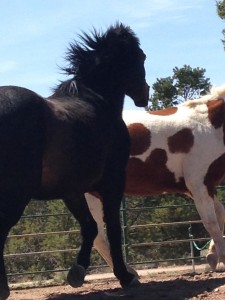 Horses have a herd mentality. Part of that is communicating without touching – flattening their ears or moving toward another horse across the pasture to get them to move, just twitching an ear in some cases. I only wish I had ears that talented. They also communicate with other species like birds. They can keep each other healthy and safe by moving the least among them. Their finely tuned energetic sense of what they need to have happen means everything.
Horses have a herd mentality. Part of that is communicating without touching – flattening their ears or moving toward another horse across the pasture to get them to move, just twitching an ear in some cases. I only wish I had ears that talented. They also communicate with other species like birds. They can keep each other healthy and safe by moving the least among them. Their finely tuned energetic sense of what they need to have happen means everything.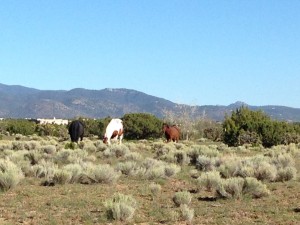
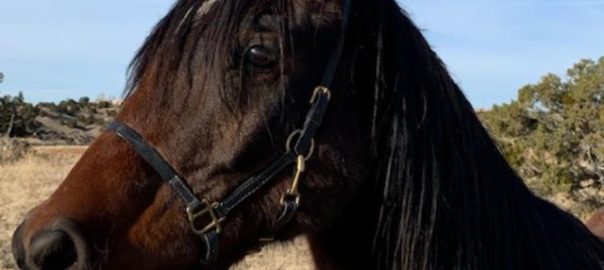







 All of us – horse and human – hold tension in our bodies and we also have areas that just don’t speak. We have places that don’t work as well as others. My right leg can get funky in the hip socket, for example. I could sit up there and worry about what a terrible rider I am and I shouldn’t ride because I’m not always symmetrical and blah blah blah, but if I focus on all the dysfunction, then I am missing what my body can do, and how it can support the areas that aren’t working quite so well. My horse has stuff going on in her hips also. I focus on the healing available in her body. And guess what? Even though she has that stuff, she is a beautiful mover. I sit on her, and I feel each part of me and her, and focus on the parts that work really well while holding an awareness of what I’d like to have shift.
All of us – horse and human – hold tension in our bodies and we also have areas that just don’t speak. We have places that don’t work as well as others. My right leg can get funky in the hip socket, for example. I could sit up there and worry about what a terrible rider I am and I shouldn’t ride because I’m not always symmetrical and blah blah blah, but if I focus on all the dysfunction, then I am missing what my body can do, and how it can support the areas that aren’t working quite so well. My horse has stuff going on in her hips also. I focus on the healing available in her body. And guess what? Even though she has that stuff, she is a beautiful mover. I sit on her, and I feel each part of me and her, and focus on the parts that work really well while holding an awareness of what I’d like to have shift. Certainly, work can be done on some of these issues independently of the horse/rider relationship, and I do that in many cases where a person may need individual table work ahead of a horse/rider session, or the horse needs to receive an entire session on his own. If someone has major back trouble, I’m going to work on that, and same with the horse. But once the bodies are free of great inhibition, we can bring them together and see where they can strengthen and enhance each other, and bring space into the relationship that may have been restricted before.
Certainly, work can be done on some of these issues independently of the horse/rider relationship, and I do that in many cases where a person may need individual table work ahead of a horse/rider session, or the horse needs to receive an entire session on his own. If someone has major back trouble, I’m going to work on that, and same with the horse. But once the bodies are free of great inhibition, we can bring them together and see where they can strengthen and enhance each other, and bring space into the relationship that may have been restricted before. ways of beginning this work. While grooming your horse you can feel along the spine for any irregularities. If you don’t know anatomy, it’s helpful to get a simple equine anatomy book – and a human one while you’re at it! Learn where the bones are. Everything else is related to or attached to the bones in some way, so it’s a great place to start.
ways of beginning this work. While grooming your horse you can feel along the spine for any irregularities. If you don’t know anatomy, it’s helpful to get a simple equine anatomy book – and a human one while you’re at it! Learn where the bones are. Everything else is related to or attached to the bones in some way, so it’s a great place to start.

 After that I may do a little bit of bodywork on areas I see are not working so well on my horse, and stretch out myself. You can apply your own exercises, such as qi gong, yoga, Feldenkrais, etc. and in Ortho-Bionomy© we have a lot of self-care exercises for people and ones you can do for your horse. Some of them I have adapted to use in the saddle as well.
After that I may do a little bit of bodywork on areas I see are not working so well on my horse, and stretch out myself. You can apply your own exercises, such as qi gong, yoga, Feldenkrais, etc. and in Ortho-Bionomy© we have a lot of self-care exercises for people and ones you can do for your horse. Some of them I have adapted to use in the saddle as well. Much thought has been given over centuries to how to ride efficiently and so as to bring out the best in the horse and rider. With the Mounted Body Balance™ approach, an older horse can move better than he or she ever has and so can her rider. Life isn’t static so we can’t guarantee that any of us are not going to have some physical challenges, but there is a lot we can solve and make more comfortable with this type of work. A horse may be able to help you with your body issues without impairing his/her own stride or balance. Of course, aging will limit what you can do but why not try to do what you love comfortably for as long as you can? As a physical therapist friend of mine says, “I’m here to help you be able to do what you love for longer.”
Much thought has been given over centuries to how to ride efficiently and so as to bring out the best in the horse and rider. With the Mounted Body Balance™ approach, an older horse can move better than he or she ever has and so can her rider. Life isn’t static so we can’t guarantee that any of us are not going to have some physical challenges, but there is a lot we can solve and make more comfortable with this type of work. A horse may be able to help you with your body issues without impairing his/her own stride or balance. Of course, aging will limit what you can do but why not try to do what you love comfortably for as long as you can? As a physical therapist friend of mine says, “I’m here to help you be able to do what you love for longer.”
